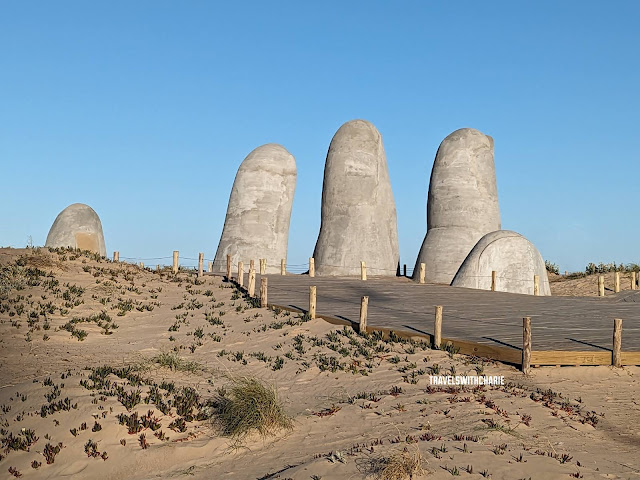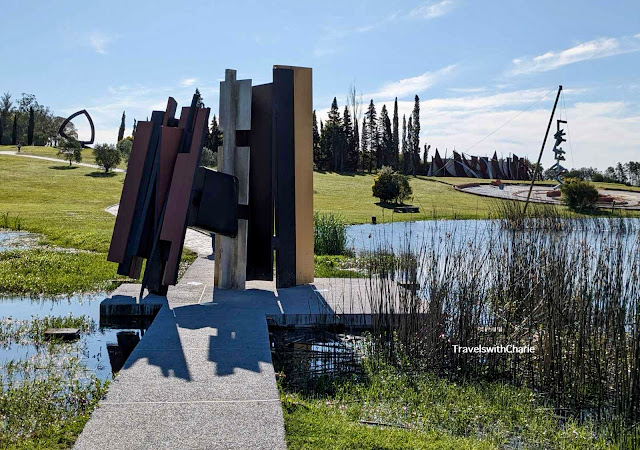La Mano or Los Dedos, Punta del Este
There’s a reason why Punta del Este and its neighboring towns are the favorite vacation spots of Argentinians, Brazilians and North Americans. The wild coastline, quiet beaches, rustic towns, art museums and galleries and local cuisine are just some of the draws to this part of Uruguay. It’s time to visit this bewitching corner of the South American continent.
La Mano or Los Dedos (The Hand or The Fingers) has become the iconic symbol of Punta del Este. Sculpted in 1982 by Chilean artist, Mario Irarrazabal, the partially submerged fingers are a warning to visitors of the rough waters of Brava Beach on which it is situated.
Abandoned hotel on Highway 10 in Santa Monica
Driving along the coastal road from Punta del Este is a pleasurable experience. As you get farther away, there are less houses and the towns are far apart. It seems a world away.
Faro (lighthouse) de Jose Ignacio
The lighthouse was constructed in 1877 and stands at 25 meters (82 ft.). Its light spans a distance of 12.7 nautical miles. The reefs in this area are dangerous.
The beach around the lighthouse
Parilla cooking at Parador La Huella
This is the traditional way of cooking meats in Uruguay - on a large, open pit grill.
Museum of Contemporary Art Atchugarry in Manantiales
From Highway 10 in the direction of Jose Ignacio, turn left on Highway 104 to get to the park. This is a great place for everyone to enjoy art and the outdoors. Entrance is free. Check out my separate article about the MACA which will posted soon.
Casapueblo in Punta Ballena
Please read my separate article about the enchanting Casapueblo here: https://www.travelswithcharie.com/2024/01/casapueblo-and-carlos-paez-vilaro.html
Where to stay in Punta del Este:
2122 Hotel Art Design
Pedragosa Sierra and San Ciro
This was a good choice. I liked the homey feel of the room which has a kitchenette and a sofa, convenient if you expect guests. It has its own restaurant/bar on the premises where breakfast is served. My room reservation included free breakfast. It is located close to a supermarket and restaurants. It is within walking distance to the beach.
Where to eat in San Ignacio
Parador La Huella, Playa Brava, Faro Jose Ignacio
Reservations required at this popular restaurant. https://paradorlahuella.com/
How to get to Punta del Este:
Renting a car would be the best way to explore the Atlantic coast of Uruguay. But you can also take the bus to Maldonado or Punta del Este from the main bus terminal in Montevideo. It takes about 2 1/2 hours in a clean, modern and comfortable bus to reach Punta del Este and costs around USD$10.00 one way (in November 2023). I was impressed by how easy it was to take the bus. There are several bus companies at the terminal where you can purchase your ticket. Buses leave every 30 minutes or so. The bus conductor will inform you of your stop if you ask him. This is also the way to get to Colonia del Sacramento, the well preserved historic town in southwest Uruguay. The bus station in Punta del Este is across the beach from the famous sculpture, La Mano, is located.
How to get to Jose Ignacio from Punta del Este:
By bus from Maldonado or Punta del Este to Jose Ignacio, check details here: rome2rio.com.
By Uber: I had the chance to take Uber in Punta del Este and this could be an option if you don’t have a car. However, Jose Ignacio is approximately 35 minutes away from Punta del Este and this could be an expensive alternative.
Stay connected
*****
Images by TravelswithCharie









